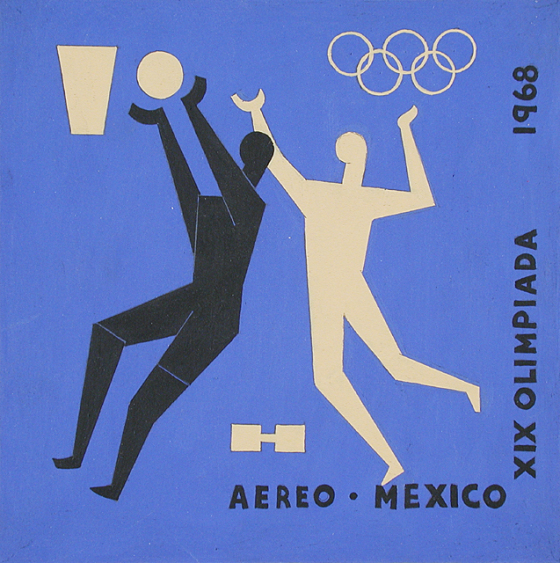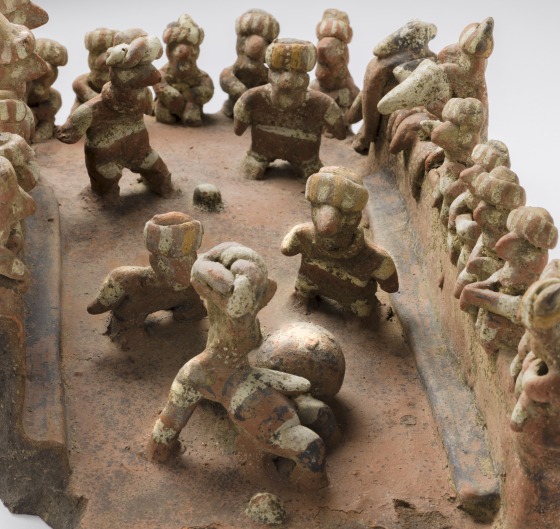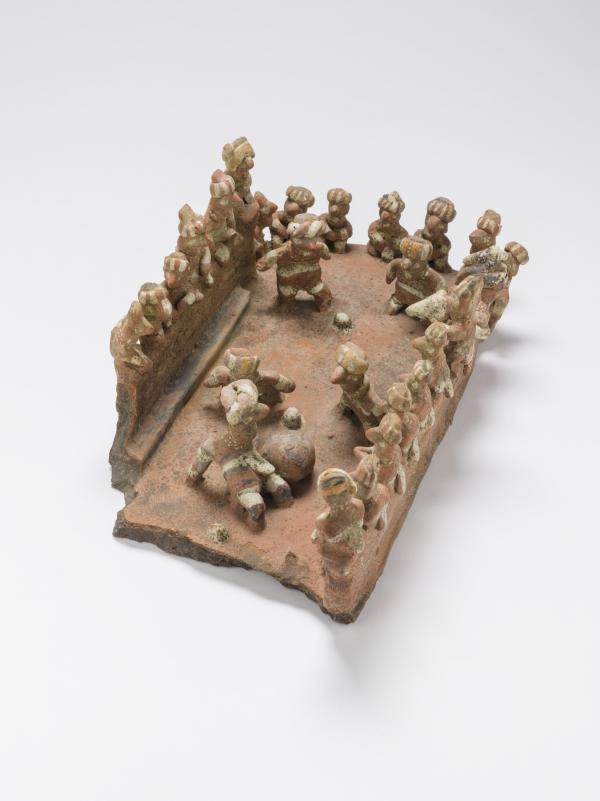James Naismith invented basketball in the late 19th century, after a Massachusetts YMCA decided that a group of delinquent youth needed a vigorous game that could be played indoors in winter. The game was more beautiful than anyone imagined it would be, requiring few modifications over the next century and becoming the third-most popular sport in the United States.
Basketball exerts its influence on art as on other things. The art critic Dave Hickey wrote a whole book, Air Guitar, connecting the two. (If you haven’t read his essay “The Heresy of Zone Defense” deconstructing Julius Erving’s mind-bending reverse layup against the Lakers in the 1980 NBA Finals, below, do.)
I often wish this museum had more great works of art that take basketball as subject or inspiration. The Whitney has Paul Pfeiffer’s extraordinary Fragment of a Crucifixion (After Francis Bacon) (1999). An image of a player (Larry Johnson), his jersey anonymized, clenches his fists and howls, perhaps in agony, perhaps in victory (in fact, Johnson had just slammed a dunk, but in this case, that is beside the point, no pun intended). I interviewed Paul about the piece, talking about the intensity of spectacle sports and the archetypal athlete; his work lends a provocative twist to terms like “March Madness.”
In 2008, LACMA presented Contemporary Projects 11: Hard Targets—Masculinity and Sport, an exhibition exploring the motif of the (male) athlete. Included in that show was an extraordinary work, Practice (2003), by Los Angeles’s own Mark Bradford, a video in which he shoots hoops wearing a gown constructed of Lakers jerseys.
In the interview with Art21, he described the piece, saying: “You just don’t put a hoop dress on a black male body and go play basketball. It became increasingly difficult: the dress was an obstacle. I would fall and get up, stumble and get up. Sometimes I would make the shots; sometimes I wouldn’t. But I would always get up. And for me, it was really about roadblocks on every level—cultural, gender, racial." This essay by Chris Bedford discusses that work, among others.
We aren’t entirely without basketball-related art in our collection. Our graphic design collection includes a stamp created for the 1968 Olympics with an abstraction of two players, one black, one white, battling under the board.

I find it too stylized to communicate much about the choreography of basketball, but it captures some of the grace of the game, the players airborne, arms outstretched, the ball just after the moment of release. (The more enduring image of those Olympics is, of course, LIFE magazine’s picture of sprinters Tommie Smith and John Carlos atop the medal podium, reminding the world that idealistic representations of equality, like our stamp, belie the enduring realities of racism.)
By the way, although basketball was a 19th century invention, ball sports played on delineated courts date back to ancient times; consider our Nyarit Ball Court Model, currently on loan to the Metropolitan Museum of Art for Design for Eternity: Architectural Models from the Ancient Americas, that may be as old as 200 BC. It’s reminiscent of poc-ta-poc, an ancient Mayan game in which players would propel a rubber ball through a hoop without using their hands or feet (I’m not sure even the Harlem Globetrotters have ever done that). The victorious survived, while the defeated did not.

I could continue…but instead, I offer this Pinterest board of basketball-related art. (Don’t miss the Los Carpinteros court, titled Free Basket, at 100 Acres Sculpture Park in Indianapolis, a work of art where one could, conceivably, also play a game of pickup.)
Head to the Art of the Ancient Americas galleries in the Art of the Americas Building, Level 4, to view objects from LACMA's permanent collection depicting ball game scenes.



